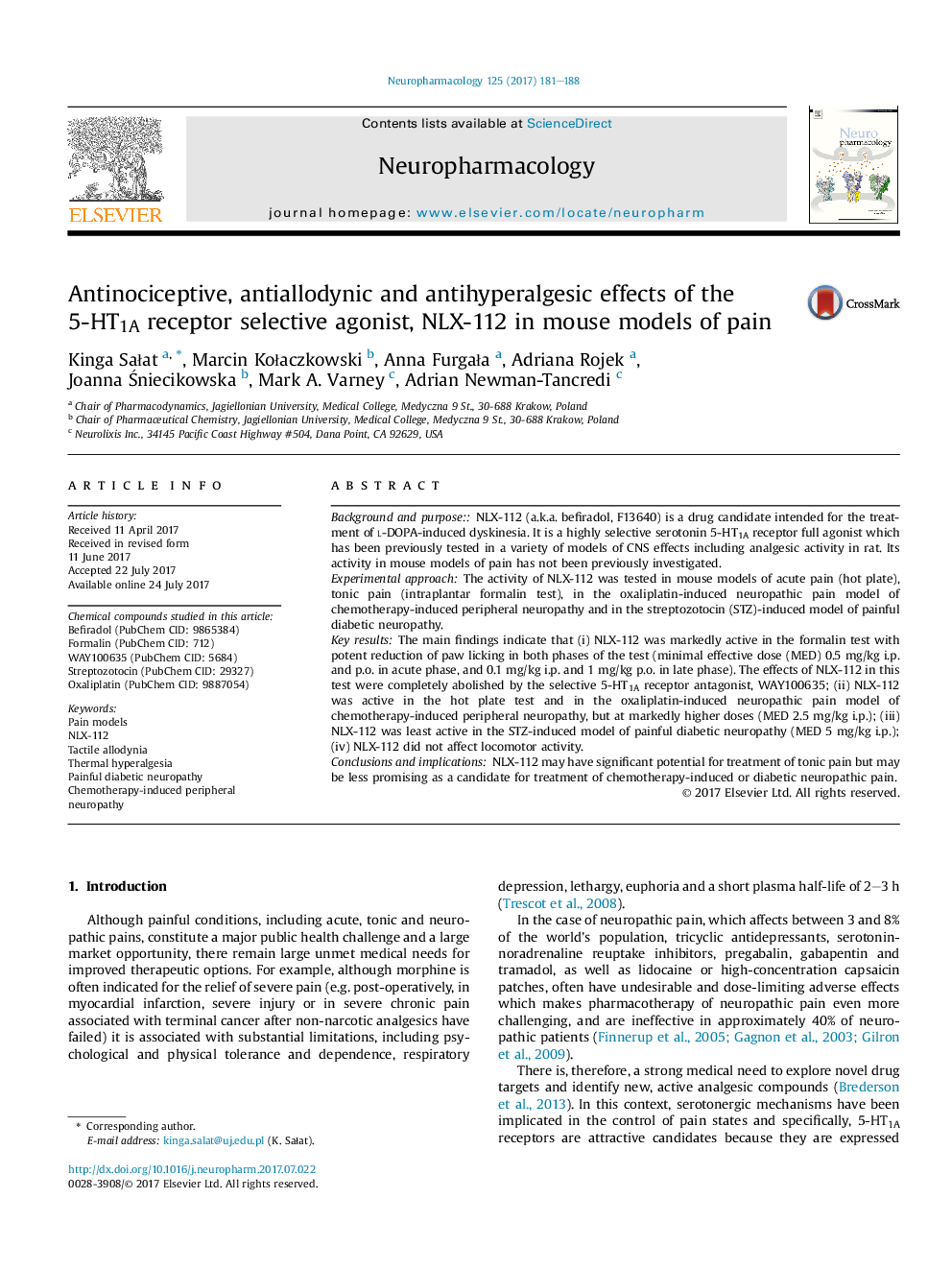| Article ID | Journal | Published Year | Pages | File Type |
|---|---|---|---|---|
| 5548812 | Neuropharmacology | 2017 | 8 Pages |
â¢NLX-112 is a highly selective serotonin 5-HT1A receptor full agonist.â¢NLX-112 potently reduces paw licking in the early and late phases of the intraplantar formalin test.â¢At higher doses it is active in the thermally-induced acute and oxaliplatin-induced neuropathic pain models.â¢NLX-112 is least active in the diabetic neuropathic pain model.â¢At the highest analgesic dose tested NLX-112 does not affect locomotor activity.
Background and purpose:NLX-112 (a.k.a. befiradol, F13640) is a drug candidate intended for the treatment of l-DOPA-induced dyskinesia. It is a highly selective serotonin 5-HT1A receptor full agonist which has been previously tested in a variety of models of CNS effects including analgesic activity in rat. Its activity in mouse models of pain has not been previously investigated.Experimental approachThe activity of NLX-112 was tested in mouse models of acute pain (hot plate), tonic pain (intraplantar formalin test), in the oxaliplatin-induced neuropathic pain model of chemotherapy-induced peripheral neuropathy and in the streptozotocin (STZ)-induced model of painful diabetic neuropathy.Key resultsThe main findings indicate that (i) NLX-112 was markedly active in the formalin test with potent reduction of paw licking in both phases of the test (minimal effective dose (MED) 0.5Â mg/kg i.p. and p.o. in acute phase, and 0.1Â mg/kg i.p. and 1Â mg/kg p.o. in late phase). The effects of NLX-112 in this test were completely abolished by the selective 5-HT1A receptor antagonist, WAY100635; (ii) NLX-112 was active in the hot plate test and in the oxaliplatin-induced neuropathic pain model of chemotherapy-induced peripheral neuropathy, but at markedly higher doses (MED 2.5Â mg/kg i.p.); (iii) NLX-112 was least active in the STZ-induced model of painful diabetic neuropathy (MED 5Â mg/kg i.p.); (iv) NLX-112 did not affect locomotor activity.Conclusions and implicationsNLX-112 may have significant potential for treatment of tonic pain but may be less promising as a candidate for treatment of chemotherapy-induced or diabetic neuropathic pain.
Graphical abstractDownload high-res image (225KB)Download full-size image
